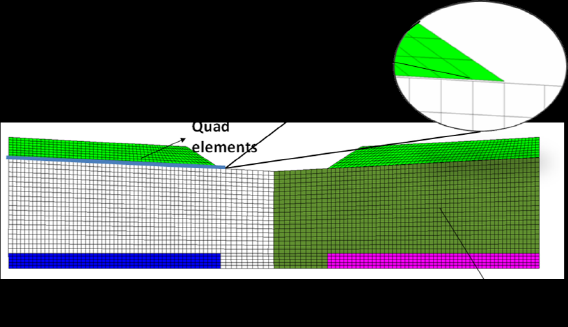When one defines the ground water level to be above the ground surface (and applies the relevant pore pressure conditions on top), one needs also to apply the hydrostatic pressure of the water normal to the ground surface in order for the effective stresses to be computed correctly.
The code below shows the application of pore pressure 5.6658 at node 1761.
set Timeseries1761 "Constant -factor 5.6658"
pattern MultipleSupport 3 {
...
groundMotion 31761 Plain -vel $Timeseries1761
imposedMotion 1761 3 31761
...
}
In order to match the effective stresses on the top of the layer in the middle of the central channel, where the ground water level is above the soil surface, one should also specify the loads applied due to the water weight to the soil surface with the following command:
set Timeseries "Constant -factor -1.8"
pattern Plain 4 $Timeseries {
...
load 1561 0. .1 0.
...
}
The above command specifies a vertical load of -0.18 on the node 1561. By applying these loads we make sure that the effective stresses at the ground surface are exactly zero.
Also, the shear rings of the laminar box have a specific mass. We apply concentrated mass at the x direction on the side nodes of the model. The following command specifies a nodal mass of the value of 0.01015 at the node 58:
mass 58 0.01015 0 0
In this model there are two types of domains, the two-DOF domain where the quad elements and their respective nodes have been created, and the three-DOF domain where the quadup elements and their respective nodes have been created. In order for the two domains to be connected the nodes on the common boundaries of the two domains are connected with equalDOF objects, as shown in Figure C.
In the example below the horizontal and vertical displacement DOFs of node 39 having two DOFs is connected to the node 40 having 3 DOFs.
equalDOF 40 39 1 2
